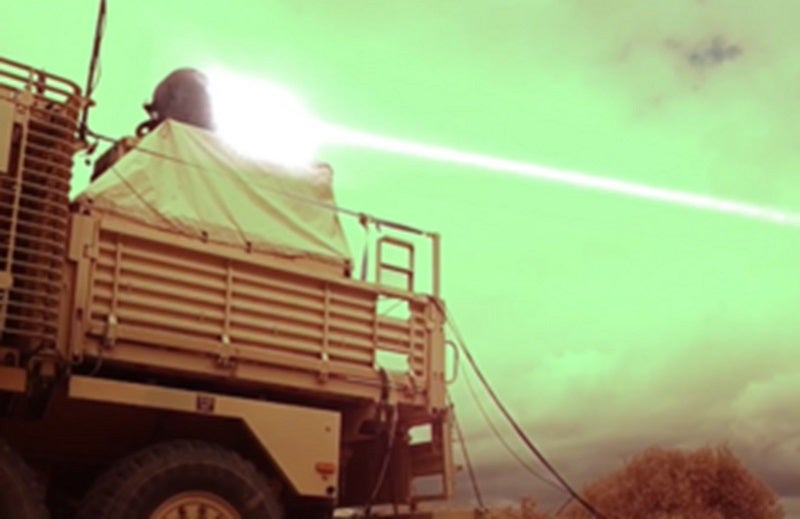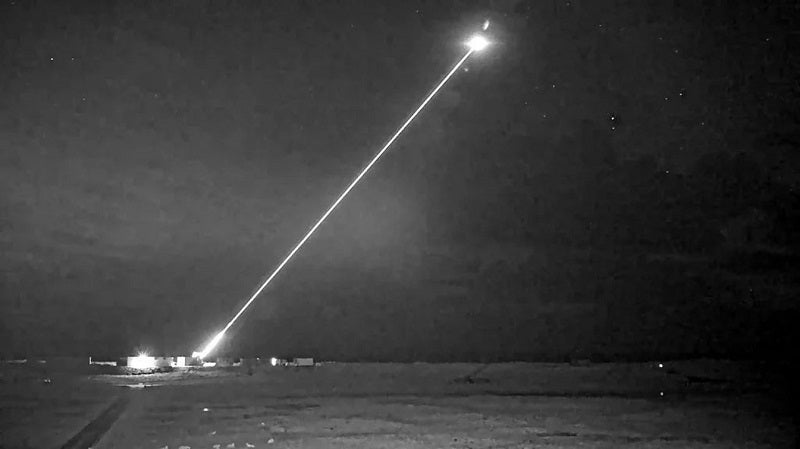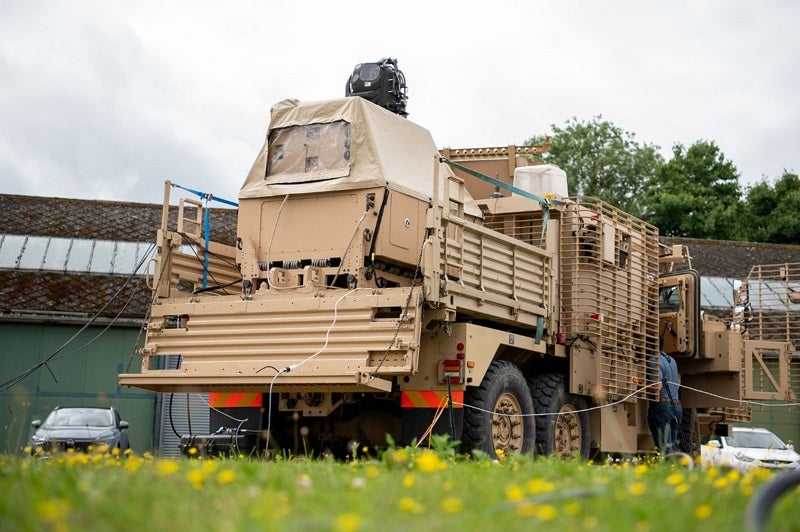A British Army Wolfhound armoured vehicle has deployed a Land Laser Directed Energy Weapon (LDEW) system for the first time, according to a statement from the UK Ministry of Defence (MoD) on 22 July 2024.
Conducted at Porton Down, a government test range near Salisbury, a series of tests demonstrated the 15KW mounted system, which neutralised targets at distances reaching more than one kilometre.
The next trial will be held in September 2024, when the system will engage dynamic targets.

LDEW and DragonFire
The conflict in Ukraine has demonstrated the effectiveness of a layered air defence amid the changing nature of the high intensity warfare environment. Cheaply made uncrewed aerial systems (UAS) have proven to be a modern menace to tactical operations on the ground, for vehicles and personnel alike.
Ukraine has in recent months demonstrated a capacity to manufacture drones, particularly first-person-view variants, which are guided by a user wearing a virtual reality headset.
“Such munitions are used to devastating effect in frontline combat,” Defence Analyst, James Marques, noted in a GlobalData briefing in March, “often compensating for Ukraine’s near-constant shortfall in conventional artillery ammunition.”
This new, lightweight and portable demonstrator will allow the British Army to learn the best way to exploit lasers as a counter-UAS (C-UAS) solution. Its unlimited rechargeable magazine and zero-logistics burden make a strong contrast with other technologies.
Land LDEW is not the first instance in which the MoD have tested a laser weapon system against aerial targets. The first was DragonFire, a different C-UAS laser solution used to devastating effect in the MoD Hebrides range in Scotland.

The precision of its beam is equivalent to hitting a British pound coin from a kilometre away.
At the end of April, the UK Government announced that the multi-domain DragonFire system will be applied to the maritime domain, onboard Royal Navy ships by 2027.
Wolfhound deployment
Wolfhound is part of the British Army’s family of Protected Wheeled Vehicles. It is a 6x6 version of the Mastiff vehicle.
Combined with an armoured, multi-role vehicle such as Wolfhound, doubly protected with another bulky layer of steel, Army personnel will remain secure from aerial threats.

The Land LDEW system is portable and can be integrated on to any land platform with the required available space.
It should also be noted that this concept was conceived last year, when one of the companies in the industrial group, Raytheon UK, revealed the idea at the Defence and Security Equipment International (DSEI) 2023.
A year on, the British supply chain for the ground-based, mobile LDEW concept was brought to being by Raytheon UK, Frazer-Nash, NP Aerospace, LumOptica, Blighter Surveillance Systems, and Cambridge Pixel.
Development process
Pairing the technical expertise of Defence Science and Technology Laboratory (Dstl) with the acquisition skills from Defence Equipment & Support (DE&S), ‘Team Hersa’ is managing the delivery of the systems and is responsible for preparing the MoD for the introduction of innovative weapons systems.
DE&S will engage with the project from this early stage of the programme as required by the Integrated Procurement Model, introduced by the previous Conservative Government.
This process bring in checks and balances from the very start of prospective programmes as a way of challenging assumptions as part of a holistic approach to acquisition. Likewise, the Armed Forces as well as Dstl will also provide input.









